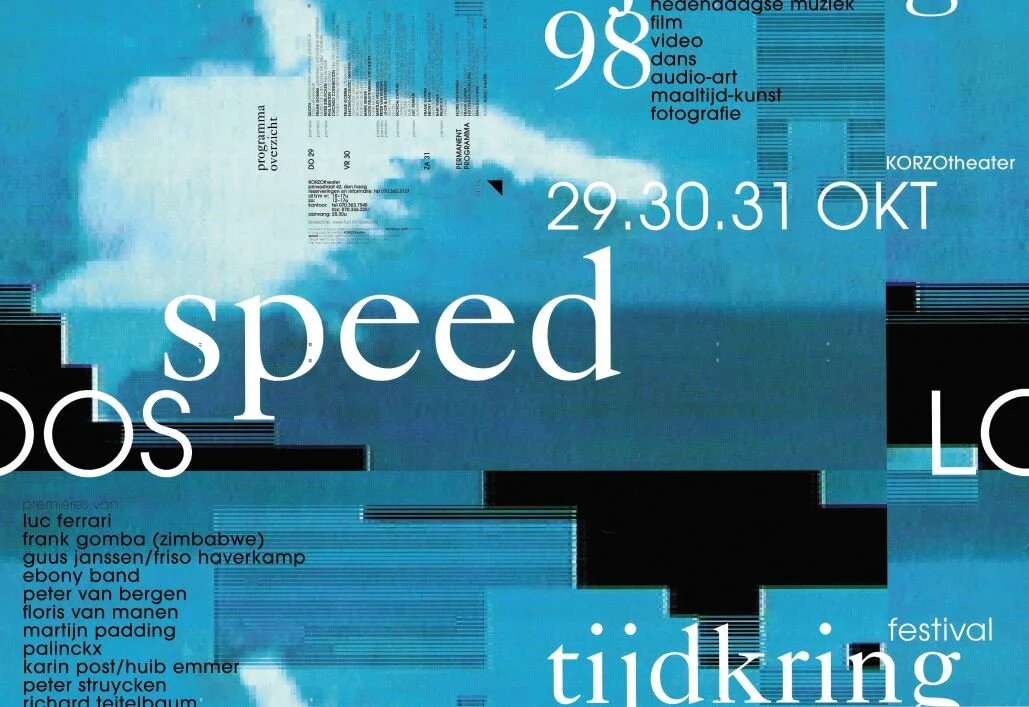Tijdkring - SPEED 1998
SLOW
Anyone remember America's '70s actie serie 'The Six Million Dollar Man' or its spin-off 'The Bionic Woman'? Where our hero or heroine had had half his or her body parts replaced by top-secret state-of-the art hardware, which made these normal-looking folk super strong and super fast? The best bit, seen three or four times in every episode, was when Steve Austin or Jamie Sommers would snap into lightning-swift action that blurred before befuddled villains' eyes. But to portray these quick bursts of righteous violence by overcranking the projector and going into fast-motion would have been absurd. It would have reduced our bionic friends' America-saving jabs and gyrations to slapstick hijinx out of silent-film comedies, to zipping about like overcranked Bennie Hill responding to the irresistible call of 'Yakety Sax' under the closing credits (a sort of visual equivalent of those jacked-up dixieland out-choruses). Instead, the TV auteurs had the brilliant inspiration to convey blinding speed with its exact opposite. They portrayed all the brisk action in slow motion, mimicking the stately ballet of bodies moving through space as guns slowly blaze, in Arthur Penn's 'Bonnie and Clyde' or any of several Sam Peckinpalz films. Or perhaps in homage to the slo-mo astronauts-outside scenes in '2001.' What Penn, Peckinpah, Kubrick and the American Broadcasting Company understood was the rapturous quality any activity takes on when radically slowed down. It's what La Monte Young and John Woo have in common. Certain devotees of pornography, according to a recent American movie magazine, pore over hardcore films frame by frame, looking to freeze on a performer's face in one of those rare moments when emotion or at least an excess of genuine pleasure betrays real feeling, in the middle of a most cynical enterprise. We all know what that's about, a little, don't we? One minute we're trying to look cool before our partner and the next we're drooling all over their collarbone. First slow, then fast, then if you're lucky a moment where so much joy hits you so fast you don't want to move for fear of ending the moment. This can be a very selfish choice in certain situations, but there it is. "Emotion recollected in tranquility" was the English romantic poets' credo. Certain practical or perhaps Calvinistic Dutch put their own spin on that idea. They slice time ultra-thin to examine the fast beautiful moments under a microscope: Dick Raaijmakers stages a live half-hour descent from a bicycle, LOOS or 'Bint's' de Bondt reduce music to lone, loud hits shattering the silence, shards of sound radically separated in time. In a classic LOOS performance, the musicians would stand ready, silent, waiting for someone to cue the next rapid unisono outburst. I never heard anyone describe those gigs as sexy, but thinking about the way LOOS would go from rigid attentiveness to full-band spastic overspill, with only a twitch or two as advance warning, the idea of watching them becomes almost voyeuristic. Yeah but: over time even LOOS changes. As their 3 October BIMhuis gig demonstrated, the music may develop more rapidly now, with shorter rests, the particles coming so relatively quickly, you can read them as components of a wave. First slow, then fast. END

